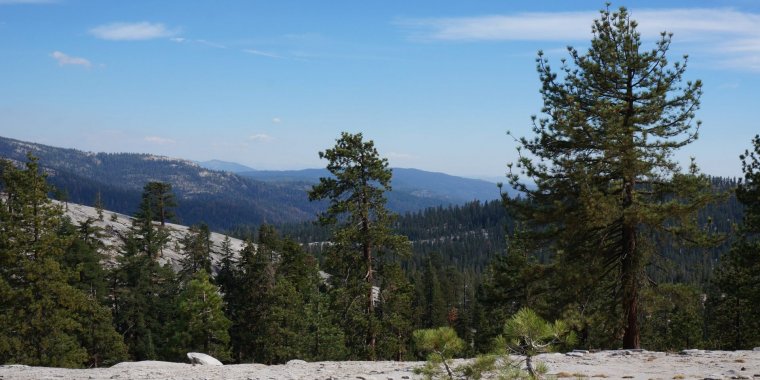| News / Science News |
Study reveals surprising role of dust in mountain ecosystems
Trees growing atop granite in the southern Sierra Nevada Mountains rely on nutrients from windborne dust more than on nutrients from the underlying bedrock.

Sierra Nevada Mountain forests receive a large percentage of their nutrients from windborne dust. Image credit: Lindsay Arvin/University of Wyoming.
The team led by University of Wyoming (UW) scientists took samples of live pine needles in the Sierra Nevada Mountains. They used two biochemical "fingerprints" in the pine needles to trace the nutrients. Dust has one fingerprint and bedrock another. The pine needles showed the degree of mixing of the two.
The results suggest that dust-derived nutrients can be vital to mountain ecosystems, even when nutrient supply from bedrock is substantial.
After making the initial findings, the team then took two datasets -- a global database of erosion rates and a global model of dust inputs -- to look at the effects of dust on nutrients in mountain ecosystems worldwide. The analysis demonstrates that dust can provide a large fraction of a mountain ecosystem's nutrients.
"This combination of datasets allowed us to see where dust is important in the world," Cliff Riebe of UW said. "One surprising finding is that it may be more critical than previously thought in a lot of places, such as the Appalachian Mountains and Western Europe."
The concept of Earth's "critical zone" -- the swath from the top of the tree canopy down to bedrock -- gives scientists the framework to look at the environment from a larger perspective.
This study shows that dust transported around the world in the atmosphere is an important source of nutrients for plants, even where its contribution isn't obvious. Earth maintains its balance, often in surprising ways. (National Science Foundation)
YOU MAY ALSO LIKE



